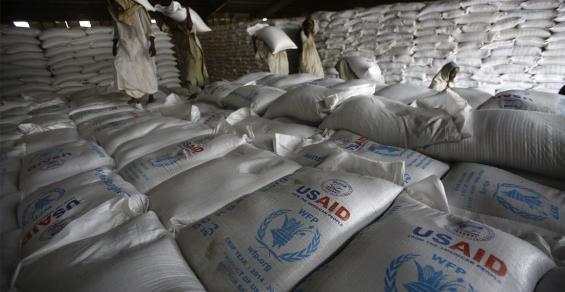Sorghum Focus: In a volatile world, U.S. sorghum farmers can provide a safe and affordable food source.
Sorghum Focus turns 7 years old in July, and after perusing the archives, I’m convinced that we’ve never broached the subject of food aid. With everything going on in the world today, I think it’s time to rectify the situation.
First let me say that God is in control, and he’s working out all things for our good and his glory even as I write this. We’re going to get through the various global disasters currently unfolding, and we’ll be better for it. But in the short term, we’ve got a lot of work to do to ensure our fellow men and women on this planet are well taken care of.
Nowhere is this truer than on the African continent. We typically run around an 80-day supply of corn worldwide — and that’s without a war in Ukraine or a drought in the U.S. Accordingly, we don’t have much room for error, and when supply shocks happen, the ripple effects often hit countries in Africa hardest. Many of these countries are already facing food insecurity, and the Biden administration has begun exercising authorities that will enable it to provide immediate relief and discussing ways in which it can provide longer-term relief, either through commodity purchases or incentives to U.S. farmers.
Farmers are ready
U.S. sorghum farmers stand ready to help in these efforts. Sorghum is the “resource-conserving crop,” so farmers in the drought-stricken High Plains are looking to sorghum to help them manage weather risks in 2022. Sorghum is also a top option for double croppers set to harvest wheat in the next couple of months, so we expect to see hundreds of thousands, if not millions, of double-crop sorghum acres harvested this fall. Assuming a level playing field around loan rates and insurance incentives, sorghum will provide the most reliable, highest-volume source of additional grain for food aid in 2022.
Sorghum is one of the most important food aid commodities provided by the U.S. The crop originated in Egypt some 8,000 years ago, and it continues to be a staple in many diets across the African continent today. Thus, citizens of many countries there prefer the taste to other grains. Such is the crop’s importance that seven of the top 10-largest sorghum-producing countries are in Africa. These include (in order of harvested acreage) Sudan, Nigeria, Niger, Ethiopia, Burkina Faso, Mali and Chad. Together, these countries were home to 56% of global sorghum acreage and 37% of global sorghum production over the past five years.
Opportunities to help
With Sudan and Ethiopia on the list of countries the Biden administration is targeting for immediate relief, there are clearly opportunities for U.S. sorghum farmers to be a part of the solution to an urgent global problem. Up to 10% of the U.S. sorghum crop is annually exported as food aid, and 3.6 million bushels have been purchased for food aid destined for Chad, Kenya, Somalia and Sudan so far in this marketing year. With the proper incentives in this marketing year and the next, this number could climb significantly.
In a volatile world, U.S. farmers can provide much needed relief in the form of safe, reliable and affordable foodstuffs, and the sorghum industry stands ready as a willing partner.
Duff is executive vice president for National Sorghum Producers. He can be reached by email at [email protected] or on Twitter @sorghumduff.




